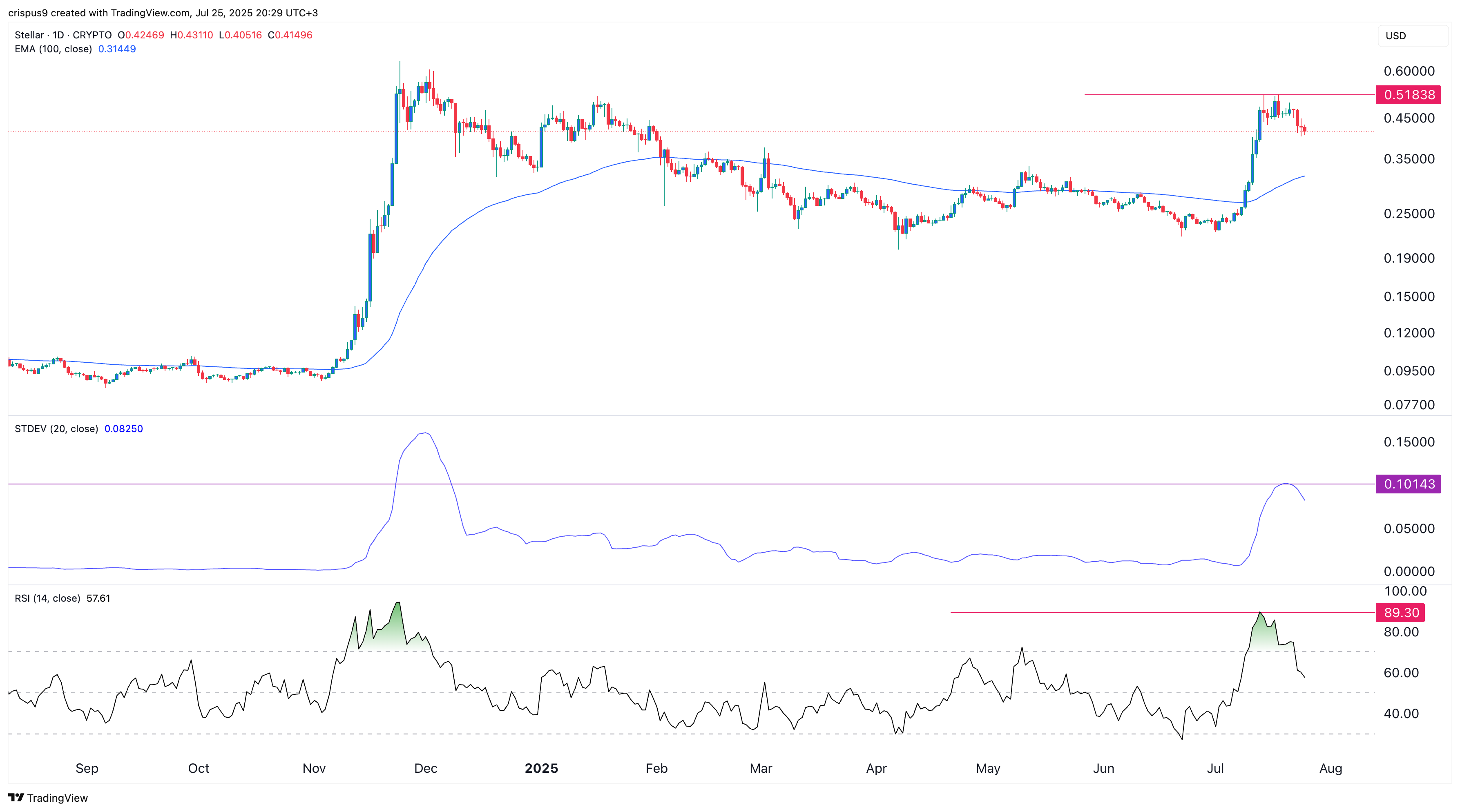Here’s why Bitcoin and crypto like Pepe, Jasmy, Stellar plummeted
A sea of red dominated the crypto market today, July 25, as Bitcoin and most altcoins continued their pullback.
- Bitcoin and most altcoins pulled back this week as investors booked profits.
- The tokens also dropped due to mean reversion, where assets tend to revert to their historical averages.
- Cryptocurrencies are also falling ahead of Trump’s tariff deadline.
Bitcoin (BTC) is down by about $8,200 from its all-time high. The total market capitalization of all cryptocurrencies dropped from the year-to-date high of $4 trillion to $3.89 trillion.
Most altcoins were in the red, with popular tokens like Pepe (PEPE), Jasmy Coin (JASMY), and Stellar (XLM) falling by over 15% from their highest level this week.
Crypto crash happens amid profit-taking
A potential catalyst for the ongoing crypto market crash is profit-taking among investors after Bitcoin and most altcoins surged by double and even triple digits.
Some notable cryptocurrency investors have dumped their tokens recently. For example, Galaxy Digital sold Bitcoin worth over $500 million this week. Similarly, Chris Larsen, a co-founder of Ripple Labs, sold XRP tokens worth over $140 million.
It is common for experienced and retail investors to book profits after a prolonged rally. Doing that helps them to protect their investments during a downturn.
A closer look at Nansen and other analytics platforms reveals that whales and smart money investors have reduced their investments over the past few days. Whales hold 8.84 trillion Pepe tokens, down from this week’s high of 8.88 trillion.
Mean reversion and overbought conditions
From a technical standpoint, the pullback in crypto prices was driven by mean reversion and overbought signals.
Mean revision is a theory that suggests that asset prices tend to revert to their historical mean or average. In this case, most cryptocurrencies jumped significantly above their averages.
For example, the chart below shows that the Stellar Lumens token was trading at $0.4160 on Friday, much higher than the 100-day moving average of $0.3145. Its standard deviation jumped to the December high of 0.1015.
Therefore, the concept of mean reversion suggests that the XLM price should drop so that it can align with the moving average.
At the same time, the coin was extremely overbought, with the Relative Strength Index jumping to 89.30. It is common for highly overbought tokens to pull back.

Other reasons why cryptocurrencies are going down
The crypto crash was also likely exacerbated by the upcoming Federal Reserve interest rate decision and the deadline for President Trump’s tariffs.
Economists expect the Fed to leave interest rates unchanged, and possibly point to just two cuts for the year. Cryptocurrencies and other assets often fluctuate in the lead-up to the Fed decision.
The Fed meeting will coincide with the Aug. 1 deadline, in which the U.S. will implement higher tariffs on most countries unless they reach a deal.
You May Also Like

The Beijing Procuratorate announced a case of illegal USDT cross-border foreign exchange transactions involving over 1.1 billion yuan.

Report: 39% of high-net-worth individuals in the UAE hold cryptocurrencies, of which only 20% are managed through traditional institutions
